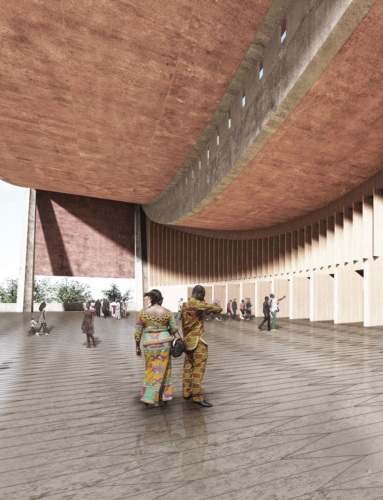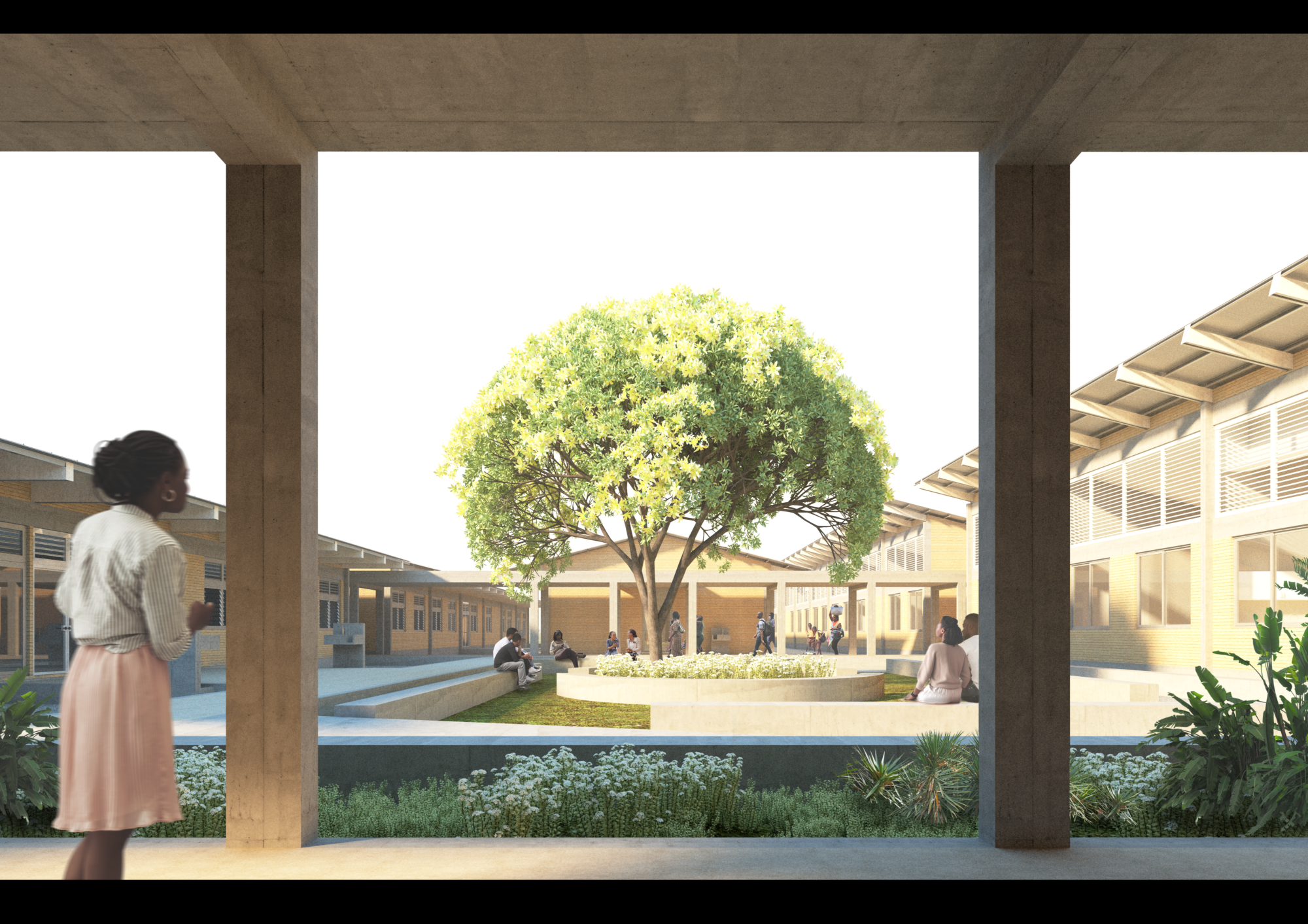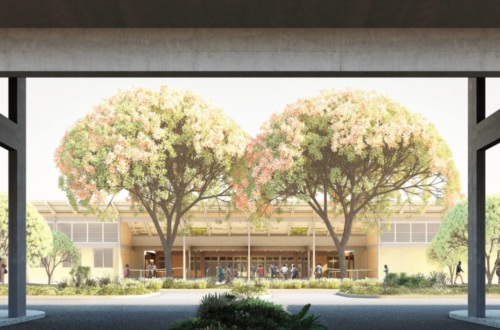
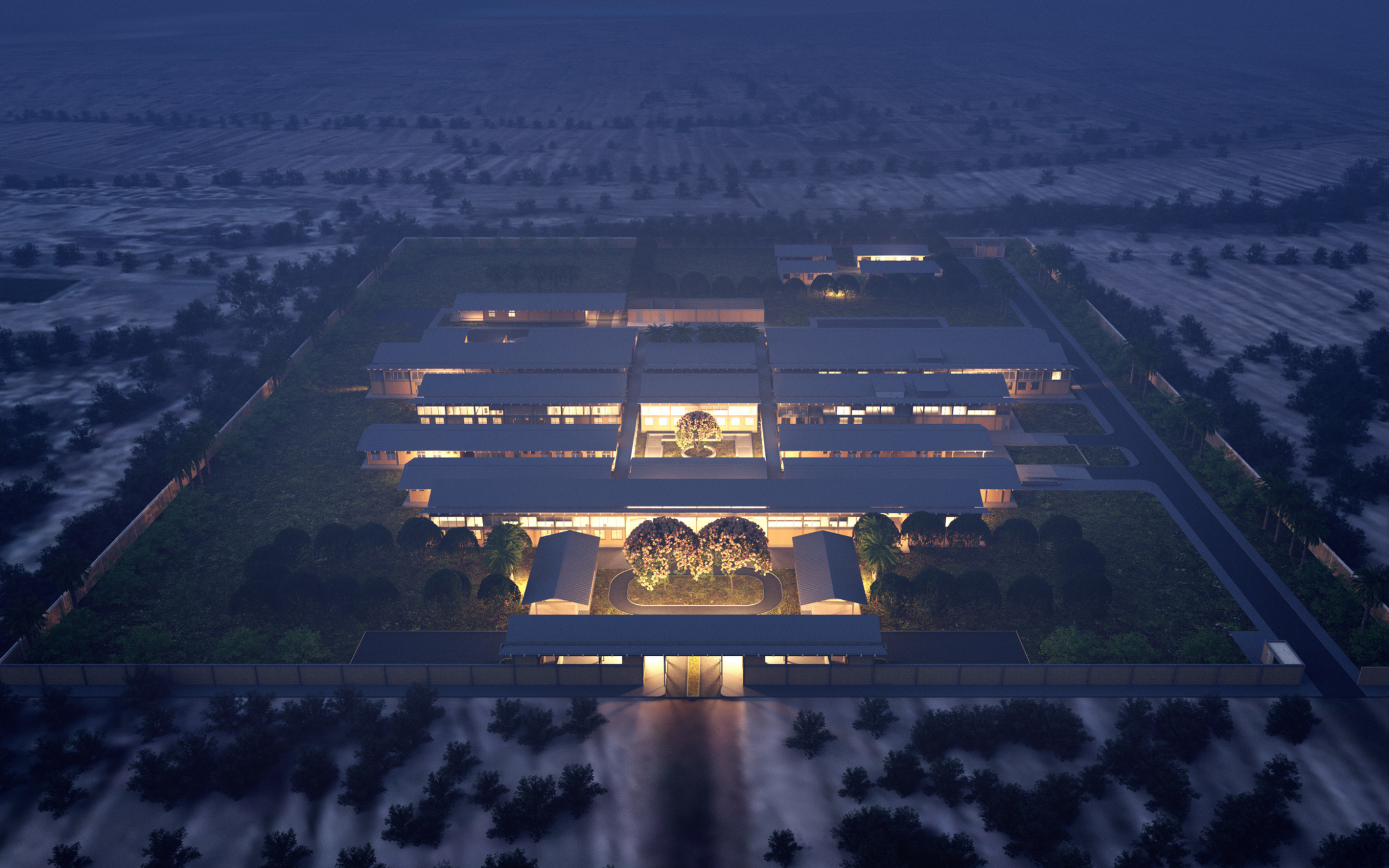
District Hospitals Ghana
Multiple Locations, Ghana
- Status
Current - Area
8,500 m² / 91,493 ft² - Category
Health Care - Architect
Adjaye Associates - Client
Hospital Infrastructure Group Ltd. - Biomed
Titan Biomedical Engineering - Contractor
Varies - Design Coordinator
Sutherland & Sutherland Architects - Kitchen Consultant
Smollensky’s - Hospital Consultant
Ministry of Health - Landscape
Brix Landscaping - QS
CC&M Consult Ltd. - Signage
Mainline - Structural, Mechanical & Electrical Engineer
CSEng - Awards
2022 International Architecture Awards
Technical Info +
By approaching the hospital as more than just a place for the provision of medical services, the design scheme aims to unlock the potential of this ambitious initiative by repositioning the hospital as a piece of community infrastructure that embodies sustainability, efficiency, and generously provides green spaces to facilitate wellness and healing.
The District Hospitals presents an opportunity to transform Ghana’s medical system by establishing unparalleled access to healthcare facilities throughout the country. Guided by the ambition to define a next-generation hospital experience, the design concept merges 21st century technology with a contextual and holistic approach crucial to the delivery of state-of-the art healthcare.
Each hospital facility is planned as a single-story campus featuring Patient Reception & Processing, Administration, Pharmacy, Labs / Diagnostics, OPD, Physiotherapy, Public Health, A&E, Surgical Ward, Pediatric Ward, Maternity Ward, Isolation Ward and Surgery. The primary care facilities are then supported by other structures such as: Mortuary, Waiting Pavilions, Security Pavilions, Residences for Families and Doctors (separated), Laundry, Waste Management, Energy Centre, Kitchen, Central Store, and Maintenance Yard
Unlocking the centuries old wisdom of the Adinkra symbols, our design sought inspiration from the Denkyem, which symbolizes a crocodile—a creature able to thrive with both air and water that is celebrated for its adaptability and intelligence. Acknowledging that the building design will need to adapt to over 101 locations in different urban and rural settings across the country, the design scheme embraces smart strategies and ecologically responsive systems able to conform to each unique geographic condition. The use of prefabricated systems work conductively with materials to maintain the lowest possible carbon footprint whilst also maximizing the ability to reproduce efficiently and rapidly.
Departing from the assumed poor industry standards of hospitals where visitors often feel lost on arrival, the form of the building becomes a tool for wayfinding with a defined canopied entrance that guides you into the heart of the building. Through a language of clustered horizontal and vertical bars, the building branches out from a central spine that is activated by a central garden and a series of nature-filled public spaces. Easily identified by the lush landscaping situated within the center of the single story campus’, the introduction of public gardens departs from the status quo of hospital design where all spaces are entirely enclosed and sterile. Instead, the central garden and the ancillary green spaces punctuate the plan and provide an overall atmosphere of healing crucial for patients.
The patient ward is situated at the outermost perimeter along the rear of the building to ensure natural light and open-air flow, crucial for health and healing. Designed for their specific functionality, the building’s are differentiated through their roof structures: gable or Butterfly. For programmes such as the patient wards, the Butterfly Roof is used to maximize the amount of natural light and cross ventilation resulting in less energy consumption for artificial lighting and excessive mechanical cooling.
In contrast to the patient wards where maximized light and airflow are welcomed, other spaces such as surgery require a more controlled environment. In these instances, the Gable Roof typology is deployed. This ensures minimum exposure to the natural elements using the roof’s long overhangs to protect against the sun’s rays and provide shade on the building envelope. Despite the differences in the roof structures, both types effectively harvest rain water and provide an insulated shell to minimize heat gain on the building interiors.
KEY FACTS
Speed Of Erection to Be Achieved Through Innovative New Construction & Fabrication System
- Acknowledging that the traditional use of cement block and mortar construction for the district hospitals is antiquated, inefficient and unsustainable, Hospital Infrastructure Group Ltd together with Adjaye Associates, Sutherland & Sutherland Architects, Titan Biomedical Engineering, Global Engineering & Technology, Ministry of Health, CC&M Consult Ltd. and CSEng leveraged new innovations in science and construction to deploy an interlocking block earth system.
- This interlocking block system allows for the offsite fabrication of interlocking earth bricks using local laterite from the respective region.
- This system allows for each facility to be constructed with speed and consistency across the various sites.
- Coupled with the use of the modular roof truss systems and interlocking, insulated roofing sheets- the re-designed facilities will be erected as a new staple of modular, sustainable components.
Hospital Planning Strategies
- Updated organizational and planning strategy to allow for improved spatial arrangement through efficient room adjacencies in response to the demands of both everyday medical needs as well as the current pandemic.
- Improved circulation efficiency through the introduction of a dual arterial walkway system. This helps to accommodate the increased traffic from the additional medical spaces and provides more efficient circulation between patients, staff, and visitors.
Sustainability Strategies
- Low carbon footprint achieved using locally sourced and produced interlocking earth bricks for the building envelope.
- Use of thermal mass and locally manufactured insulated roofing systems mitigate heat transfer to provide a more temperate interior climate.
- Utilize best practice in passive & natural ventilation strategies contributing to overall thermal comfort and improved internal air quality (mitigation for COVID-19).
- Material sourcing is majority locally specified with bare minimum use of imported materials to maintain an overall lower embodied carbon footprint.
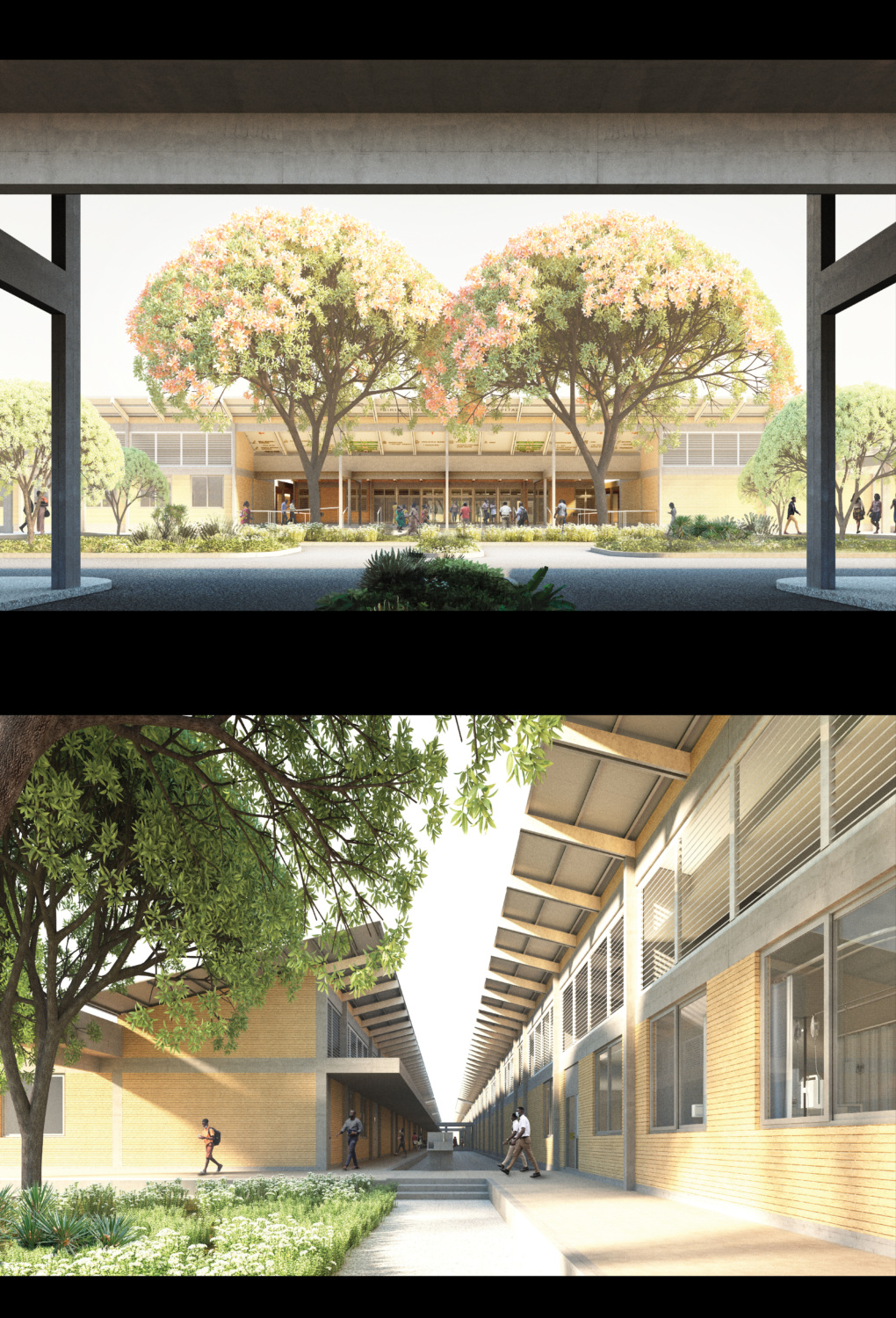
Related

Adjaye Associates reveals district hospitals for sweeping Ghanaian healthcare infrastructure initiative
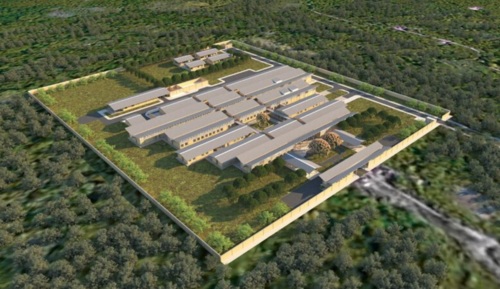
David Adjaye breaks ground on first of 101 district hospitals across Ghana
via Designboom
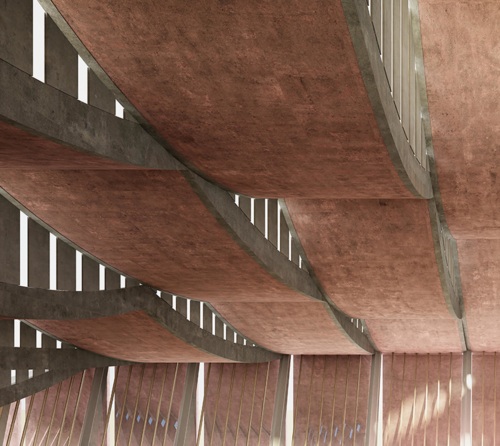
National Cathedral of Ghana
